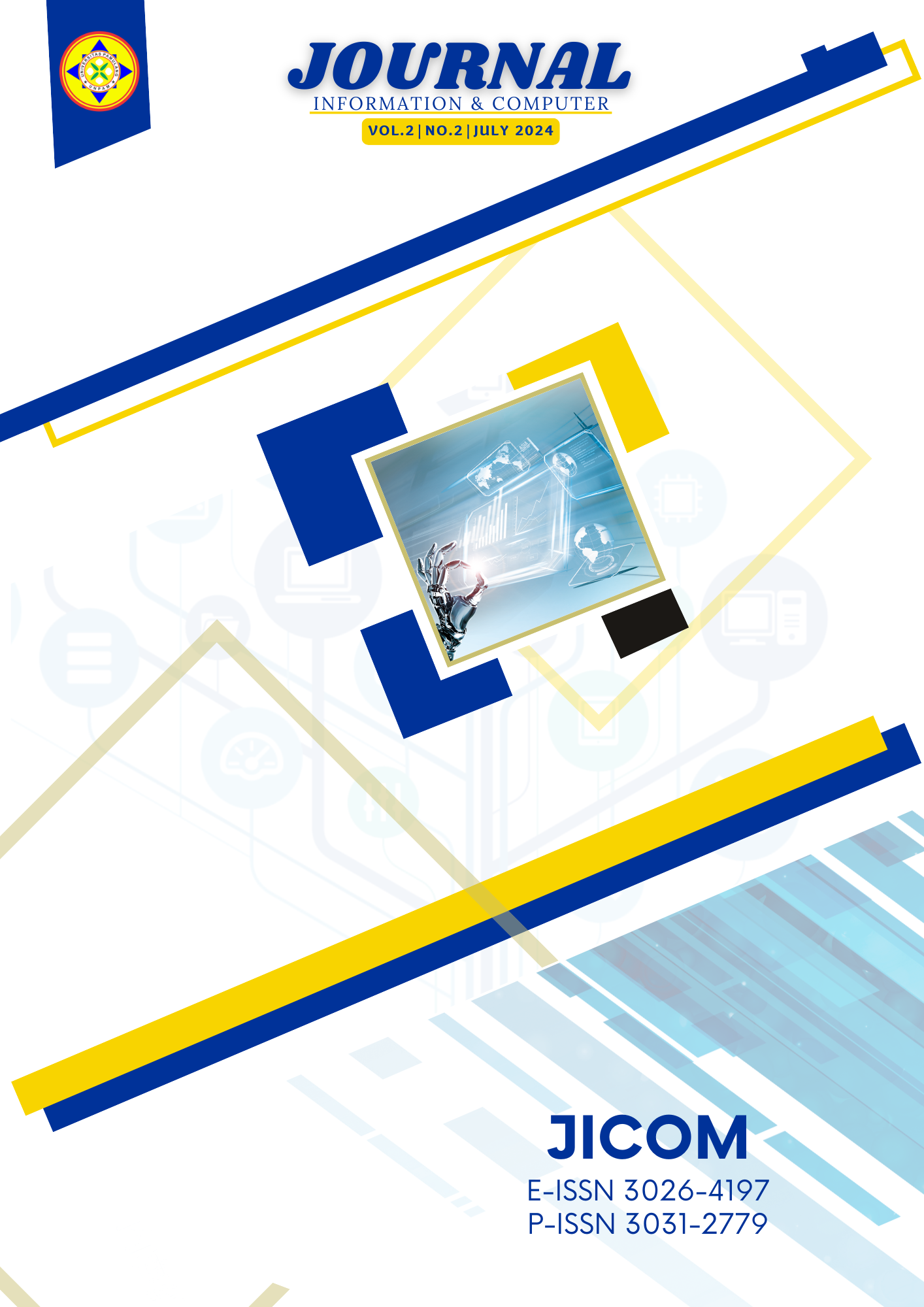Implementation of Infrared Barrier Obstacle Sensor Using Hw-201 Module in Smart Car Robot Line Follower
DOI:
https://doi.org/10.32493/jicomisc.v2i2.41191Keywords:
Smart Car Robot Line Follower,, HW-201 Module, L298N Motor DriverAbstract
This research discusses the implementation of an infrared barrier obstacle sensor using the HW-201 module on a smart car robot line follower. The main aim of this research is to improve the ability of the smart car robot line follower to detect and follow lines on a predetermined path. This system is designed to use an infrared barrier obstacle sensor installed on the front of the line follower robot smart car facing downwards to detect and follow lines along the movement path. The method used includes hardware design consisting of the HW-201 module, microcontroller and drive motor, as well as software development to control the response of the smart car robot line follower to the detected line. The test results show that the smart car robot line follower is able to detect and follow lines with high accuracy, thereby increasing efficiency and reliability in following the line. It is hoped that this implementation can become the basis for further development of robotic systems that require automatic navigation capabilities. And these results show that the HW-201 IR sensor is a suitable option for robotics applications that require the ability to detect and avoid obstacles.
References
J. T. Elektro, “Studi Perhitungan Jatuh Tegangan Dan Rugi-Rugi Daya Pada Penyulang Merapi Gardu Induk Simpang Tiga Skripsi Dibuat Untuk Memenuhi Syarat Mendapatkan Gelar Sarjana Teknik Pada,” 2019.
A. Akbar and N. Noviani, “Tantangan dan Solusi dalam Perkembangan Teknologi Pendidikan di Indonesia,” Pros. Semin. Nas. Pendidik. Progr. Pascasarj. Univ. Pgri Palembang, vol. 2, no. 1, pp. 18–25, 2019.
Asmawi, Syafei, and M. Yamin, “Pendidikan Berbasis Teknologi Informasi Dan Komunikasi,” Pros. Semin. Nas. Pendidik., vol. 3, pp. 50–55, 2019.
A. Z. Falani, “Robot Line Follower Berbasis Mikrokontroler Atmega 16 Dengan Menampilkan Status Gerak Pada Lcd,” e-NARODROID, vol. 1, no. 1, 2019, doi: 10.31090/narodroid.v1i1.6.
T. Suryana, “Sistem Pendeteksi Objek untuk Keamanan Rumah dengan Menggunakan Sensor Infra Red,” Sist. Pendeteksi Objek untuk Keamanan Rumah dengan Menggunakan Sens. Infra Red, vol. 1, no. 1, pp. 1–17, 2021.
A. Cinta Ayu and H. Mifta, “SISTEM PENGONTROLAN KEMUDI DAN FESS PADA MOBIL PENGGUNA KURSI RODA.” Politeknik Manufaktur Negeri Bangka Belitung, 2022.
S. A. Tynisa, “Rancang Bangun Robot Sar Berkaki Menggunakan Sensor Infrared, Sensor Warna Tcs3200 & Sensor Ultrasonik Berbasis Arduino Mega2560,” 2024.
M. P. Saptono, E. Murniyasih, R. Mustafa, P. Saint, P. Sorong, and M. P. Com, “Design Implementation of Automatic Hand Washer and Liquid Soap Bottle Based on Arduino Nano Atmega328,” vol. 8, no. 1, 2022.
A. Kridoyono et al., “Pengenalan Teknik Robotika untuk Anak Sekolah Dasar SDN Margorejo 1 Surabaya,” vol. 4, no. 2, pp. 339–355, 2024.
E. Inaiyah Agustin and R. Tri Yunardi, “Pelatihan Robot Line Follower Dan Pengnalan Internet Of Things (IoT) Untuk Siswa Di Kota Jombang,” Darmabakti Cendekia J. Community Serv. Engag., vol. 01, no. 2, pp. 50–55, 2019, [Online]. Available: www.e-journal.unair.ac.id/index.php/DC













